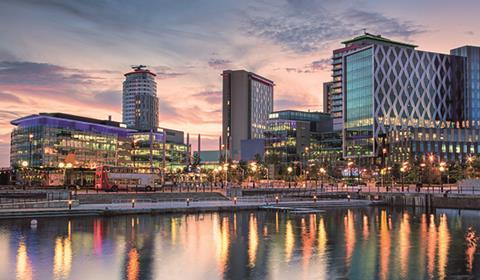Some would argue the phrase ‘northern powerhouse’ has started to lose credibility, with many in the north sneering at the term or seeing the plan as ineffectual and irrelevant to their day-to-day lives.

Whether this indifference is due to an apparent lack of thought from the government as to which geographies actually make up the northern powerhouse or a perceived lack of practical policy initiatives to support the rhetoric is up for debate.
But in spite of growing disinterest in the term northern powerhouse, the fact remains that there are a number of government initiatives related to the north in the pipeline.
From a real estate perspective, these initiatives present opportunities to unlock value at a time when valuations in the capital are frothy.
Rather than writing off UK real estate altogether, savvy investors will be looking for investment opportunities in the regions. And in the north, one can find relatively attractive valuations on assets with strong upside potential.
Transport and infrastructure are due to be significantly improved on account of government funding.
While transport links from London to the north tend to be passable, with journeys from London to Manchester, York or Leeds taking around two hours to cover 200 miles, it is the transport between northern regions that is truly below par. The distance by rail from Liverpool to York is 100 miles (with Manchester and Leeds in between), yet the train takes the same time as from London, despite being half the distance.
The much-anticipated Northern Hub initiative will significantly reduce rail journey times between Leeds, Liverpool, Manchester and Sheffield, providing businesses in the north with easier rail access to nearby northern cities.
Looking forward
Before these rail works complete, we believe that investing in well-located office space could be a savvy move for investors, pre-empting the increased likelihood of some firms moving to the regions once transport links outside London improve.
In fact, a number of large companies are already considering moving back-office functions and other staff to locations in the north. Midas - Manchester’s inward-investing organisation - recently reported that seven major businesses, including the law firm Freshfields, were considering setting up offices in the city, each seeking more than 100,000 sq ft of space.

This move north is not just restricted to one industry; it is apparent across many. We have seen a ripple effect of TV and film companies heading north following the BBC’s move to Salford. Both ITV and the BBC now have a presence at Salford Quays’ Media City. Only 5% of BBC productions by volume were made in the north in 2010. Yet by 2014 this had increased to 30.6%. A report from KPMG suggests the BBC’s move to Salford boosted the UK economy by £277m in just one year.
We expect to continue to see this ripple effect of production and TV companies opening offices in Manchester, particularly as London continues to boast such high prices.
Another sector in the north presenting an opportunity for investors is distribution, on account of the stellar rise of ecommerce. As customer demands for fast delivery increase, the rise of ‘next-day delivery’ means retailers increasingly need warehouses close to their customers.
The ‘golden triangle’ in the Midlands, with its excellent transport links to locations across the UK, has long been a hub for distribution. But increasingly, warehouses are cropping up in the north. For example, Amazon has just opened its first large warehouse in the North West.
Lastly, the north’s industrial heritage may present untapped opportunities for investors. One could point to many well-known regeneration schemes in the north, from the Liverpool docks to the aforementioned Salford Quays. However, opportunities to convert large industrial buildings outside city centres are only just starting to be recognised.
Many properties associated with the north’s industrial heritage are purposefully well located and therefore within easy commuting distance of population centres. Warehouses in particular offer significant square footage and the opportunity to create modern workspaces designed for the specific requirements of tenants.
One example of this would be Lingfield Point, near Darlington, which was the world’s largest wool factory in the 1950s. Following the regeneration of the site to a mixed-use business park, the site now boasts modern office spaces occupied by tenants including the Student Loans Company and Capita.
While the vision of a so-called northern powerhouse seems a long way in the distance, progress is under way and the north presents a number of real estate investment opportunities across a range of sectors. London is certainly not the be-all and end-all for real estate investors.
Manish Chande is senior partner at Clearbell Capital






























No comments yet